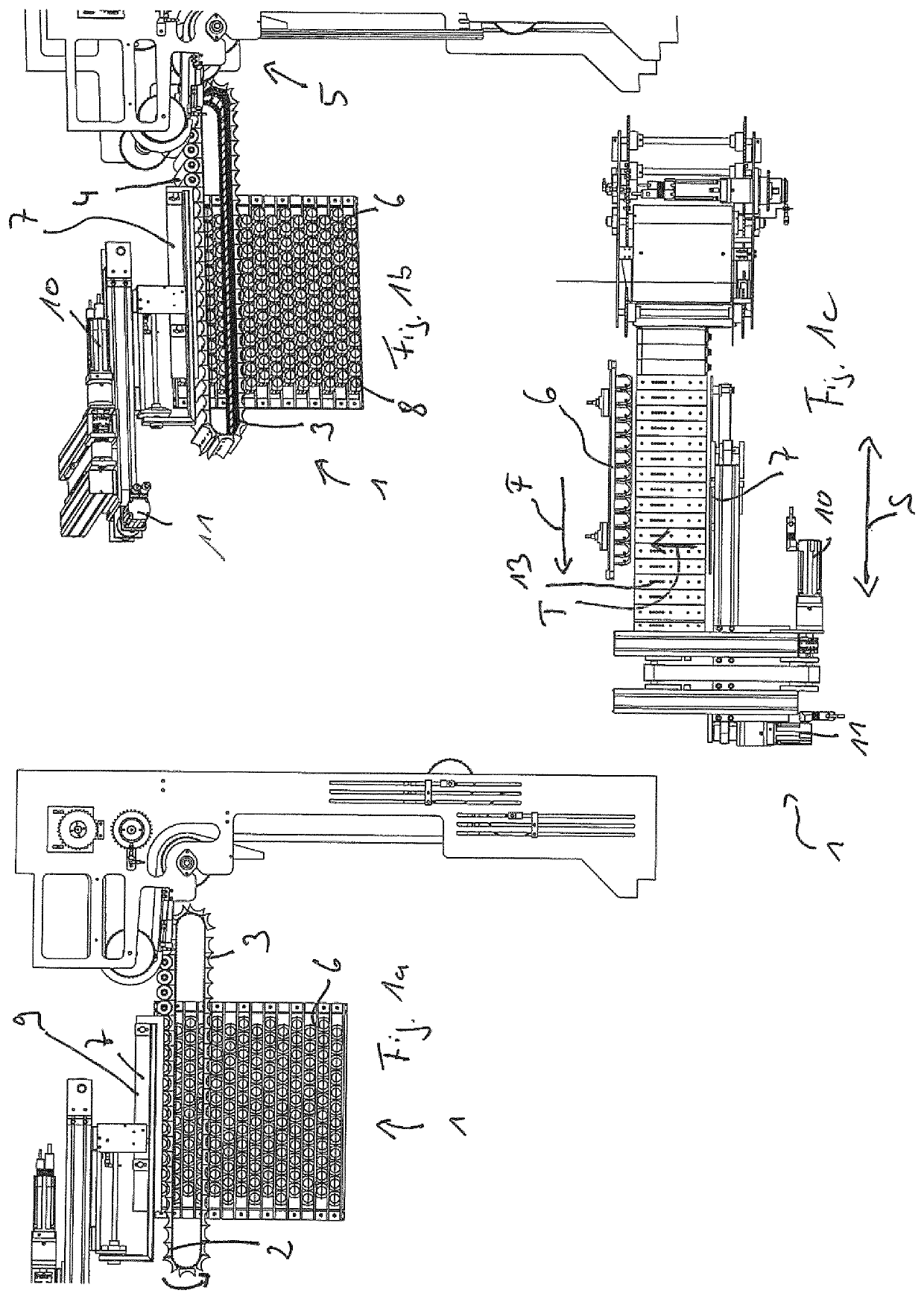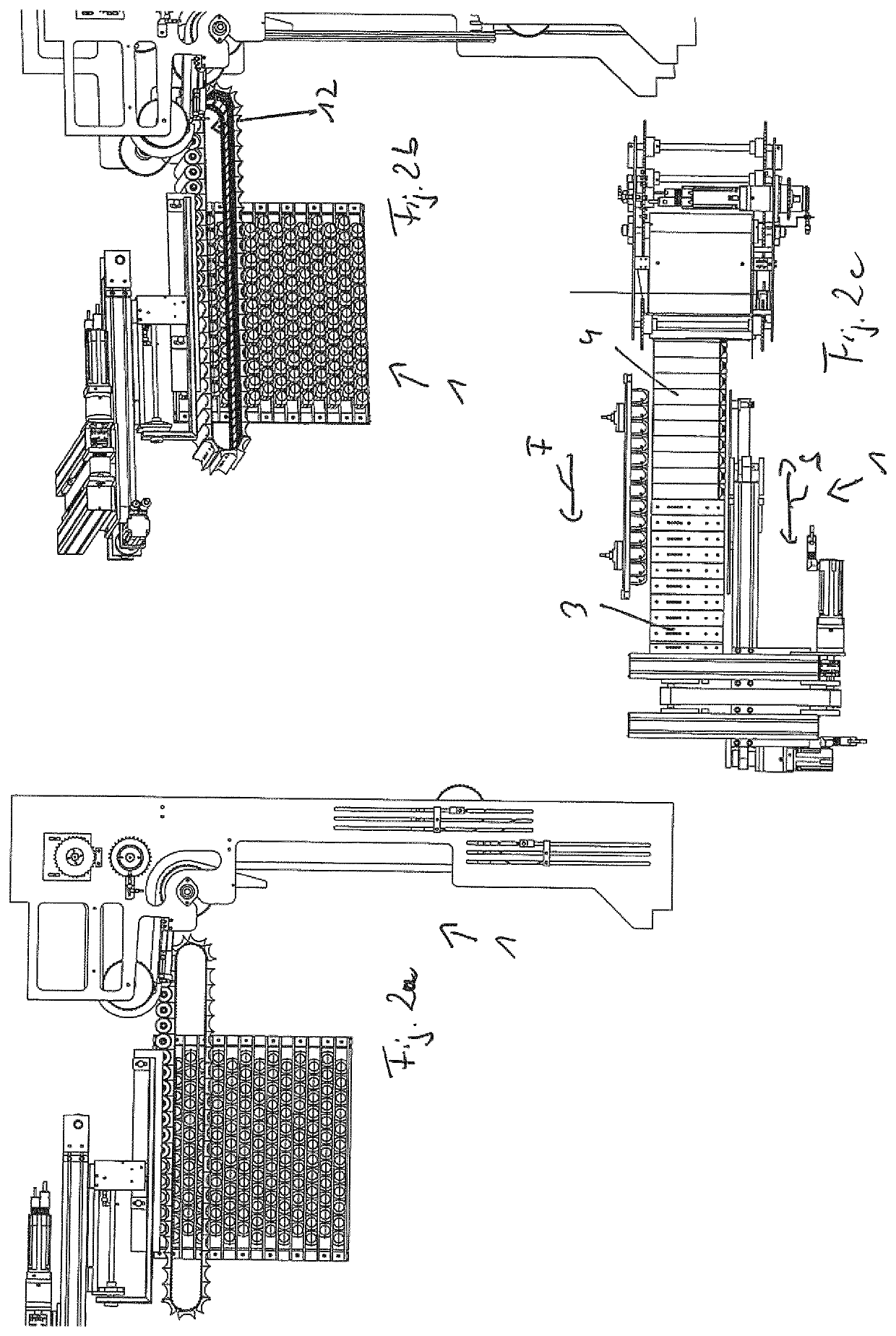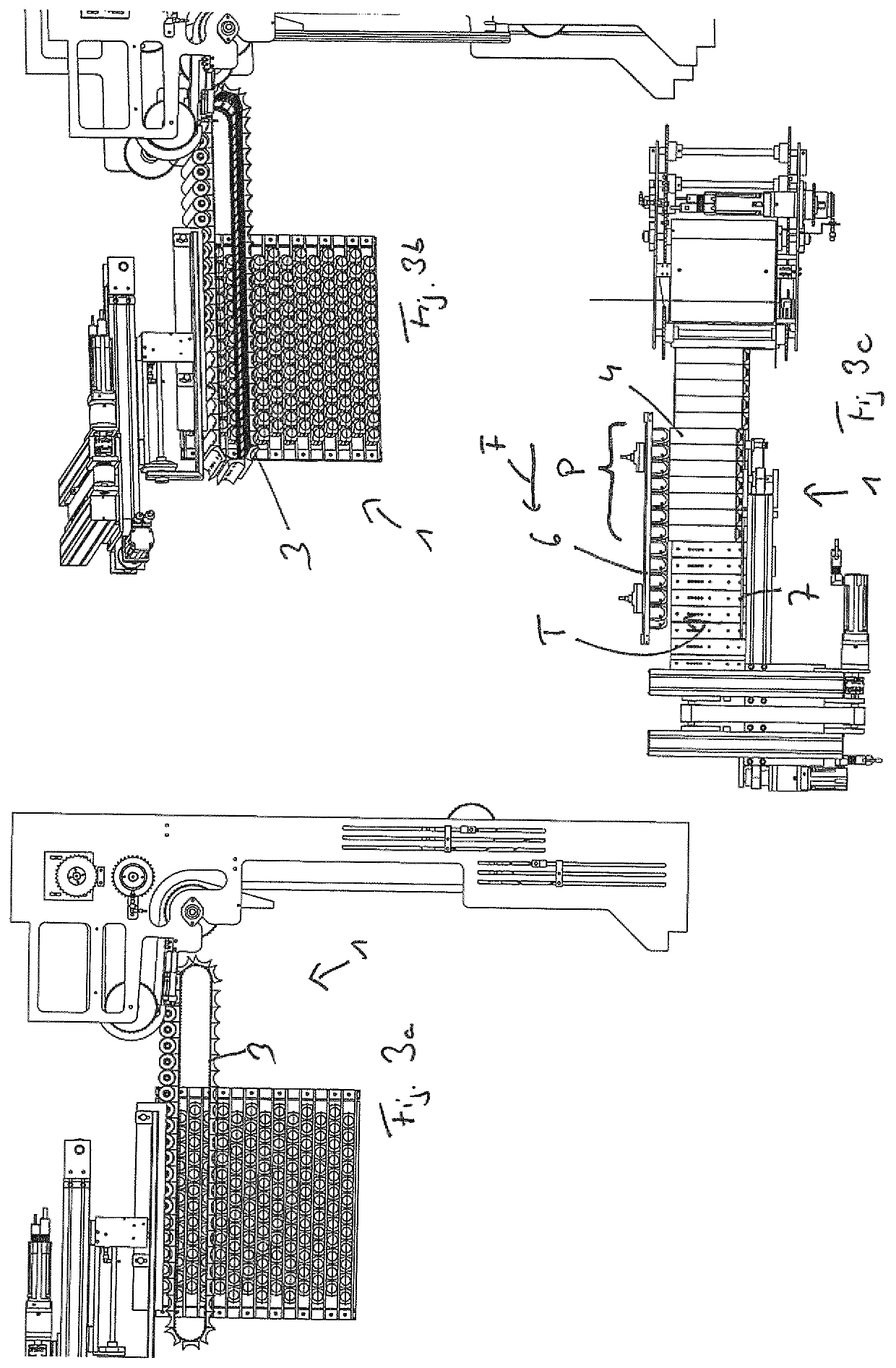Method and device for grouping product blanks
a product blank and product technology, applied in the direction of conveyors, rod-shaped objects, loading/unloading, etc., can solve the problems of large space requirements, large structure complexity, and limited working speed (cycle rate), and achieve the effect of simple structure and small retooling times
- Summary
- Abstract
- Description
- Claims
- Application Information
AI Technical Summary
Benefits of technology
Problems solved by technology
Method used
Image
Examples
Embodiment Construction
[0035]Hereinafter, first, the basic structure of a grouping device 1 configured according to the concept of the invention will be explained with reference to FIGS. 1a to 1c, and the explanations pertaining to FIGS. 2a to 8c will basically be restricted to changes in state in the course of the different operating states; the basic structure stays the same and all figures show the same device.
[0036]The grouping device 1 has a conveyor belt 3, which is realized as a pocket belt comprising a plurality of pockets 2 disposed one behind the other and each serving to receive a product in the shape of an empty can, an empty tube or an empty cartridge, said conveyor belt 3 being driven by drive means, in particular in the form of at least one servomotor, which are known per se and are not illustrated for the sake of clarity, a top (loading side) of the conveyor belt 3, shown in FIG. 1c, being driven along a straight conveying section S, which is preferably horizontal, for example, in a convey...
PUM
 Login to View More
Login to View More Abstract
Description
Claims
Application Information
 Login to View More
Login to View More - R&D
- Intellectual Property
- Life Sciences
- Materials
- Tech Scout
- Unparalleled Data Quality
- Higher Quality Content
- 60% Fewer Hallucinations
Browse by: Latest US Patents, China's latest patents, Technical Efficacy Thesaurus, Application Domain, Technology Topic, Popular Technical Reports.
© 2025 PatSnap. All rights reserved.Legal|Privacy policy|Modern Slavery Act Transparency Statement|Sitemap|About US| Contact US: help@patsnap.com



